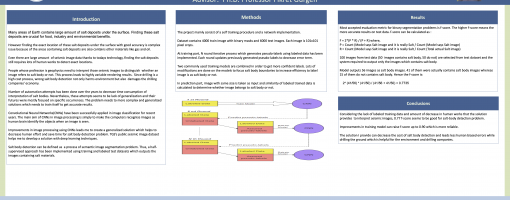Salt Detection with Deep Learning
Interpreting seismic images has important role in lots of industry areas it is highly used by people whose profession is geophysics. Salt body detection is time consuming and open to error procedure since it requires identify exact salt material locations under surface using seismic images. Not only it requires high load of human work, but also human bias can lead highly variable renderings. Errors in detecting the salt body locations cause significant damage to both environment and drilling companies. Convolutional neural networks (CNNs) have been successfully applied in image segmentation problems. They can be used for seismic image interpretations. However, lack of labeled data prevents high performance of using existing CNN models in salt body detection. In this project method which is combination of supervised and unsupervised approaches developed to solve the problem. To increase accuracy, I combined two commonly used training models. At project evaluation method outputs salt body images using 100 test seismic images. %77 accuracy achieved. Hence, results can be said as considering lack of labeled data. Project may be a adequate solution to decrease time consumption and human work load during salt body detection process and it may help in both environment and financial issues.
Poster: https://drive.google.com/file/d/16rJw5pRlzNa35aV-Aag2YxUvq9SL3giW/view?usp=sharing
Video: https://drive.google.com/file/d/1FU-ajmzzRttk5gK5BaHs9AFYxmA4ARM9/view?usp=sharing

